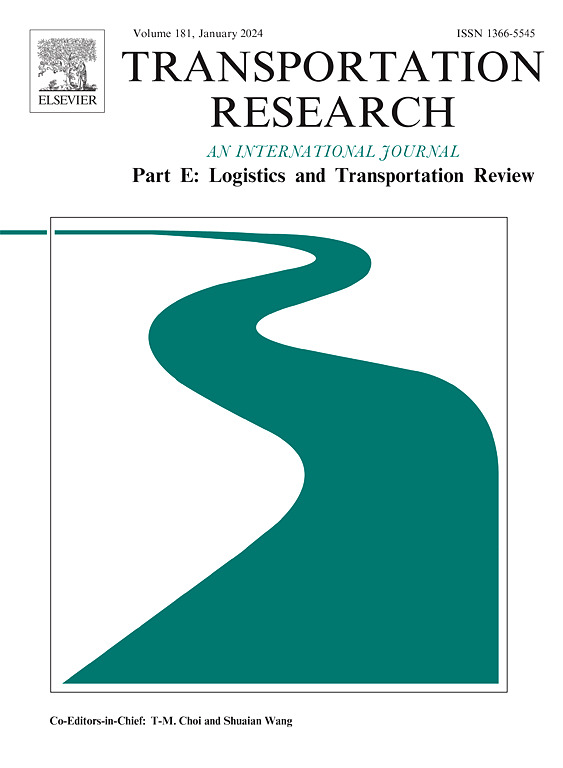Robust emergency logistics network design for pandemic emergencies under demand uncertainty
IF 8.3
1区 工程技术
Q1 ECONOMICS
Transportation Research Part E-Logistics and Transportation Review
Pub Date : 2025-02-12
DOI:10.1016/j.tre.2024.103957
引用次数: 0
Abstract
Pandemic emergencies often result in a surge in demand for emergency supplies in affected regions. To expedite the recovery process, ensuring prompt and reliable emergency supplies is crucial, yet the demand for these supplies often exhibits stochastic and time-varying characteristics as the emergency evolves. This paper introduces a two-echelon multi-period location-routing allocation problem, with the objective of concurrent optimization of facility location, transportation routing, and the allocation of various types of emergency supplies. We integrate a constraint relationship equation that links supplies and cure rate into the established SEIR model to illustrate how emergency supplies counter the spread of the epidemic. In terms of the uncertain demand for various emergency supplies across multiple emergency periods, we quantify the nominal supply demand utilizing an enhanced SEIR model. On this basis, a set of uncertain demands for emergency supplies that are subject to random disturbances in real demand is established. We devise a multi-objective robust optimization model employing a budget-of-uncertainty robust approach to minimize total transportation time, total transportation cost, and shortage of emergency supplies. Subsequently, we develop a customized multi-objective discrete gray wolf algorithm aimed at enhancing solution efficiency. Our model is applied to a real-world case study in Shanghai during the 2022 COVID-19 pandemic. Results have proved that the algorithm is effective and feasible. Managerial insights are also provided.
求助全文
约1分钟内获得全文
求助全文
来源期刊
CiteScore
16.20
自引率
16.00%
发文量
285
审稿时长
62 days
期刊介绍:
Transportation Research Part E: Logistics and Transportation Review is a reputable journal that publishes high-quality articles covering a wide range of topics in the field of logistics and transportation research. The journal welcomes submissions on various subjects, including transport economics, transport infrastructure and investment appraisal, evaluation of public policies related to transportation, empirical and analytical studies of logistics management practices and performance, logistics and operations models, and logistics and supply chain management.
Part E aims to provide informative and well-researched articles that contribute to the understanding and advancement of the field. The content of the journal is complementary to other prestigious journals in transportation research, such as Transportation Research Part A: Policy and Practice, Part B: Methodological, Part C: Emerging Technologies, Part D: Transport and Environment, and Part F: Traffic Psychology and Behaviour. Together, these journals form a comprehensive and cohesive reference for current research in transportation science.

 求助内容:
求助内容: 应助结果提醒方式:
应助结果提醒方式:


